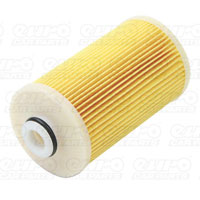Grayedout
Members
Here is the start of my post. I'll come back and add bits as I get time!
What makes up an oil?
A modern oil is made up of two major parts: Basestock and Additives in a large range of percentages from 99% Basestock / 1% Additives to 75% Basestock / 25% Additives
Basestock - this comes in two variations: Mineral & Synthetic and is classed into 5 different groups with the two lowest being Mineral and the remaining three being Synthetic.
Mineral Basestock – This is what comes out of the ground and is then refined to produce all the products that we use from it such as engine oil, fuel, and everything else. Dependent on where in the world the oil is sourced (North Sea, Middle East etc.) and how much it has been refined then the Basestocks have different properties and indeed different qualities and so these are split into two classes (I & II) with I being the lowest quality and hence cheapest. BUT even when the oil has been refined then it is not fully suitable for protecting a modern engine and has a lot of shortfalls hence why we require Additives! (more later)
Synthetic Basestocks – These Basestocks are produced ‘in the lab’ rather than being straight out of the ground and the benefit of this is some of the shortfalls of the Mineral Basestocks can be designed out and some of the properties that are required for modern engines can be built into the Basestocks which will then require less additives. Synthetic Basestocks are split into three classes (III, IV, & V) with the quality (and hence cost) increasing with class number.
‘Synthetic’ – A quick word to say that Synthetic is not always Synthetic !!! Due to a court case in America several years ago it was argued successfully that a Mineral Oil that had been hydrocracked (more extensive refining as far as I know) can actually be classed as Synthetic. Therefore, a Synthetic oil can actually be a hydrocracked Mineral oil! Believe me it’s a minefield !
What makes up an oil?
A modern oil is made up of two major parts: Basestock and Additives in a large range of percentages from 99% Basestock / 1% Additives to 75% Basestock / 25% Additives
Basestock - this comes in two variations: Mineral & Synthetic and is classed into 5 different groups with the two lowest being Mineral and the remaining three being Synthetic.
Mineral Basestock – This is what comes out of the ground and is then refined to produce all the products that we use from it such as engine oil, fuel, and everything else. Dependent on where in the world the oil is sourced (North Sea, Middle East etc.) and how much it has been refined then the Basestocks have different properties and indeed different qualities and so these are split into two classes (I & II) with I being the lowest quality and hence cheapest. BUT even when the oil has been refined then it is not fully suitable for protecting a modern engine and has a lot of shortfalls hence why we require Additives! (more later)
Synthetic Basestocks – These Basestocks are produced ‘in the lab’ rather than being straight out of the ground and the benefit of this is some of the shortfalls of the Mineral Basestocks can be designed out and some of the properties that are required for modern engines can be built into the Basestocks which will then require less additives. Synthetic Basestocks are split into three classes (III, IV, & V) with the quality (and hence cost) increasing with class number.
‘Synthetic’ – A quick word to say that Synthetic is not always Synthetic !!! Due to a court case in America several years ago it was argued successfully that a Mineral Oil that had been hydrocracked (more extensive refining as far as I know) can actually be classed as Synthetic. Therefore, a Synthetic oil can actually be a hydrocracked Mineral oil! Believe me it’s a minefield !


